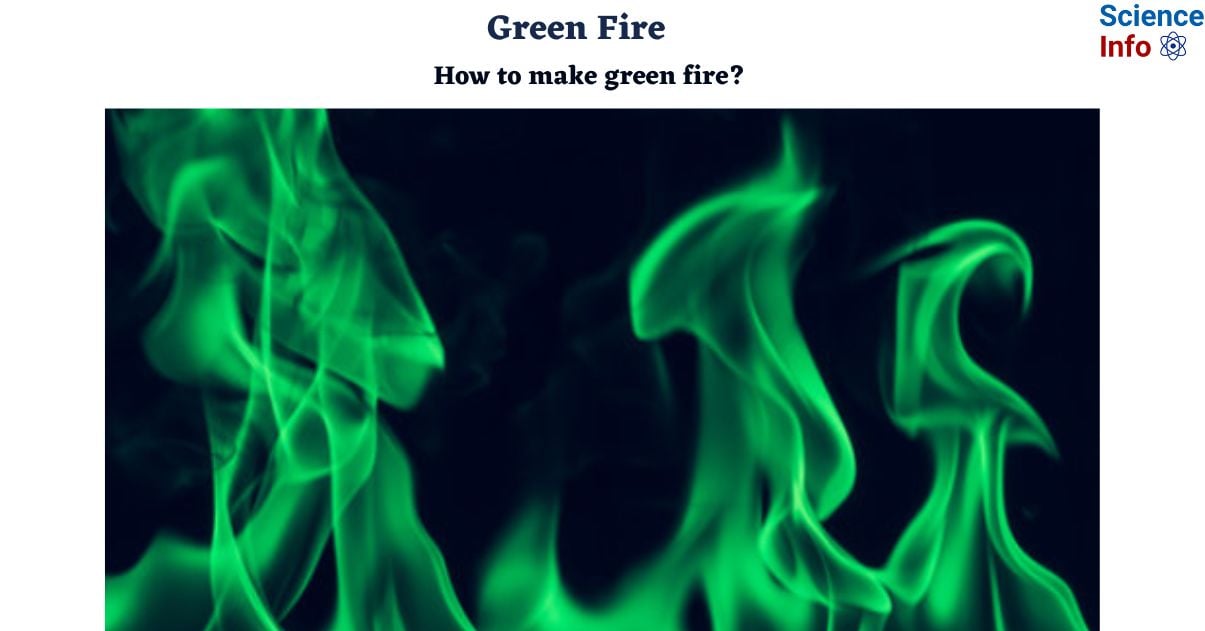Colorful chemistry experiments demonstrate how not only chemical but also physical properties change during a chemical reaction. We can make a green fire with common components and observe the changes. Green fire is one of the most intensely colored flames.

How to make green fire?
Green Fire Using Copper Sulfate
Green flames are simple to make with copper sulfate, which is a common ingredient in household goods.
Copper sulfate is the primary ingredient in certain stump removal and algae control treatments. Make sure the package label mentions copper sulfate. Not all copper salts are as safe, although some can produce green or blue flames. Although a liquid solution can be used, granular or powdered copper sulfate is the most convenient for this endeavor. When using a liquid, you have two options: either pour the liquid into a shallow dish, let it evaporate, and gather the solid for use in crafts, or soak paper or wood and let it dry before burning it.
All you have to do is add some copper sulfate to the fuel, fire it, and relish the green flames! You can reuse copper sulfate repeatedly if you are burning clean fuel since the copper is not burned by the fire.
Note: Since alcohol burns with a blue flame and turns copper a vivid green color, it is advise using alcohol or fuel derived from alcohol. If you use a different fuel or only sprinkle copper sulfate on a wood fire, the flames may still become green, but they may also turn yellow, orange, or red due to other compounds in the fuel.

Green Fire Using Borax or Boric Acid
Borax and boric acid are both boron salts. Borax is available in stores as a laundry detergent booster and household cleanser. Boric acid is sold in stores as a roach killer and disinfectant. Adding either chemical to a fire produces a bright green blaze.
Use methanol, an alcohol, in combination with either borax or boric acid, and light the mixture for optimal effects. When the alcohol evaporates, the boron compound leaves behind a white residue. If you’d want more colorful fire, add extra alcohol. Nevertheless, before adding more liquid fuel, always make sure the flame is totally out. The boron component is not consumed, therefore it can be reused.
Materials Required:
- 5 gram boric acid
- 50 ml ethyl alcohol (50 ml)
- concentrated sulfuric acid
- porcelain cups
- glass rod
- matches
Procedure:
- Fill two porcelain cups with ethyl alcohol and light it. We note that there is a yellow flame produced by the alcohol.
- Now extinguish the flames.
- Place five grams of boric acid and a few milliliters of concentrated sulfuric acid into one of the cups.
- Blend thoroughly and allow to settle for a bit.
- Light the alcohol in the cups once again.
- We observe that the flame in the cup that we added sulfuric and boric acid has become green.
Description:
- Boric acid and alcohol may produce complex esters. Complex esters are a type of compound that results from the interaction of acids and alcohols with the general form of R(C=O)OR in the presence of a catalyst, such as sulfuric acid. The properties of acids and alcohols may vary fundamentally throughout their interaction.
- Boric acid is one of the few mineral acids that can produce complex esters. Boric acid ethers emit a green fire, and this property is employed in analytical chemistry to detect boric acid and related salts. Pure boric acid esters burn at temperatures of 30 °C, allowing you to safely place your palm in the flame.
Video on Green Fire
References
- Helmenstine, Anne Marie, Ph.D. “How To Make Green Flames.” ThoughtCo, Sep. 7, 2021, thoughtco.com/how-to-make-green-flames-606190.
- https://sciencenotes.org/green-fire/
- https://melscience.com/US-en/articles/green-flame-experiment/
